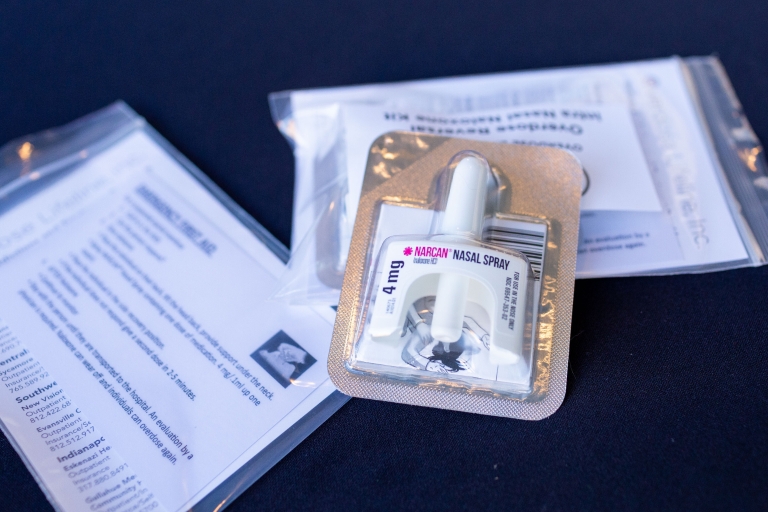In 2016, Indiana created a statewide standing order allowing pharmacies to dispense naloxone without a medical exam. While pharmacies were slow to stock and distribute the overdose-reversing drug shortly after the order, a new study by Indiana University researchers shows that is no longer true.
"When we first surveyed managing pharmacists in 2016, soon after the statewide standing order, we were surprised by how few community pharmacies were stocking and dispensing naloxone," said Jon Agley, deputy director of research at Prevention Insights, an addiction research center based at the IU School of Public Health-Bloomington, and an associate professor in the school. "But in 2018 -- pretty close to two years after that standing order -- we found substantial increases in both stocking and dispensing. This is great news considering naloxone can save lives."

The study, published in the Journal of the American Pharmacists Association, found that stocking of naloxone by Indiana pharmacists increased from 57 percent in 2016 to 92 percent in 2018, and dispensing of the overdose reversal medication increased from 23 percent in 2016 to 76 percent in 2018.
Researchers used two existing datasets that they had collected from 107 Indiana pharmacies that responded to a statewide pharmacy census in both 2016 and 2018.
The research was led by Agley; Lori Eldridge, research assistant and doctoral student at Prevention Insights; and Beth Meyerson, co-director of IU's Rural Center for AIDS/STD Prevention and a research professor at the University of Arizona. The research is part of IU's Responding to the Addictions Crisis Grand Challenge initiative.
Agley said it is typical to have a significant lag time between a policy being enacted and the actual effects on the ground. Although there are a number of potential reasons the rates may have increased, the study did find that large corporate entities that oversee pharmacies implemented practice changes, such as staff training, in response to the state order, Agley said.
"Stocking and dispensing of naloxone is really the first piece of a broader puzzle," Agley said. "Pharmacies need to have naloxone on hand, and they need to be willing and able to dispense it. The community also needs to know they can receive it and feel comfortable asking for it."
As part of their Grand Challenge research, Agley and his team are working with pharmacists and pharmacies to develop and test new ways to encourage people in need of naloxone to obtain it at pharmacies.
Responding to the Addictions Crisis
The Responding to the Addictions Crisis Grand Challenge initiative engages a broad array of IU's world-class faculty, as well as IU's business, nonprofit and government partners. Working together, the groups are contributing to an initiative to implement a comprehensive plan to reduce deaths from addiction, ease the burden of drug addiction on Hoosier communities and improve health and economic outcomes. This initiative is one of the nation's largest and most comprehensive state-based responses to the opioid addiction crisis -- and the largest led by a university.
IU Research
Indiana University's world-class researchers have driven innovation and creative initiatives that matter for nearly 200 years. From curing testicular cancer to collaborating with NASA to search for life on Mars, IU has earned its reputation as a world-class research institution. Supported by $680 million last year from our partners, IU researchers are building collaborations and uncovering new solutions that improve lives in Indiana and around the globe.






